Red Pitaya in Research
Red Pitaya platforms are now an essential component of many scientific research projects in the fields of physics, communication, materials and bioscience. Scientists and research engineers value their open source nature, flexibility to run custom code, performance, small form factor and very attractive price.
Red Pitaya platforms find a place wherever research applications require slow or fast signal acquisition, generation, real-time FPGA or CPU signal processing. Due to their ethernet connectivity, they also provide the possibility for remote measurements, which is very convenient since users can control and gather data from research experiments completely remotely.

Benefit from open-source software
The platforms’ software is open source and available on Github. Device functionalities and data can be accessed through MATLAB, LabVIEW, Scilab and Python APIs. The time needed to develop new applications is short thanks to the intuitive software design, many useful examples and detailed documentation. Users often get help from other users who share their knowledge on the Red Pitaya forum.
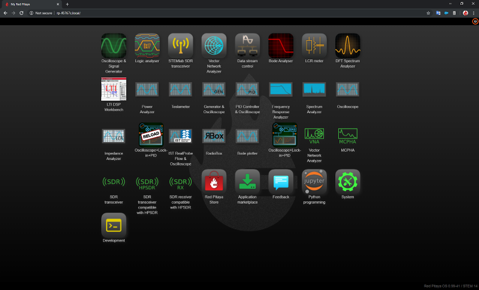
Our team constantly works on enriching our information base. Check out the documentation, teaching materials and case studies.
Apart from the web applications, Red Pitaya can be controlled with MATLAB, LabVIEW, Scilab, Python.
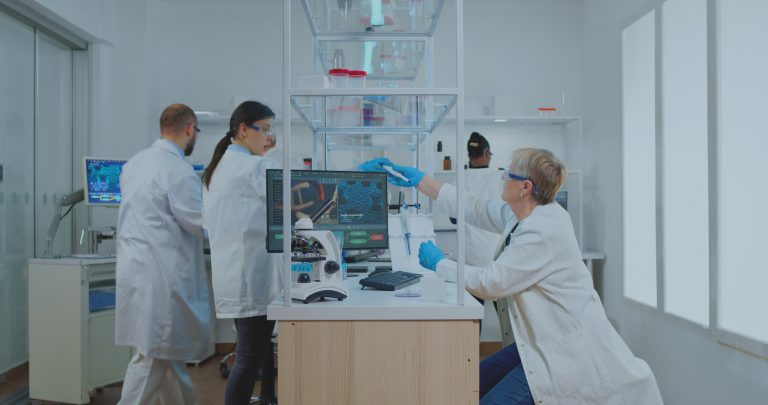
Red Pitaya boards are outstanding platforms for both slow and high speed data acquisition applications. At the same time they are multifunctional measurement instruments (oscilloscope, sig. generator, spectrum and logic analyser, LCR meter…) – a Swiss army knife for scientists, researchers and engineers.
Read more and find out how Red Pitaya can support your research
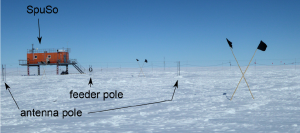
Red Pitaya for Evaluation of Southern Hemisphere Radio Propagation
In the station room, the antennas are connected to the two preamplifiers and those to the inputs of the receiving system. The receiving system uses a Software Defined Radio (SDR) system with a Red Pitaya FPGA programmable measurement device. Due to the low electromagnetic noise caused by humans in Antarctica, the preamplifiers were tuned to a high gain – a remote adjustment up to 55 dB amplification is possible.
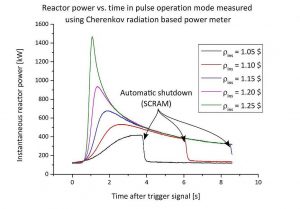
Testing a new exercise at the JSI TRIGA reactor - Cherenkov radiation-based power meter
"At the Jožef Stefan Institute TRIGA research reactor, we employed a RedPitaya board to perform Cherenkov light intensity measurements in reactor pulse operation mode in the framework of a bilateral research project in collaboration with the French Atomic and Alternative Energy Commission (CEA). The RedPitaya board was an ideal tool for this task, thanks to its excellent performance and flexibility. "
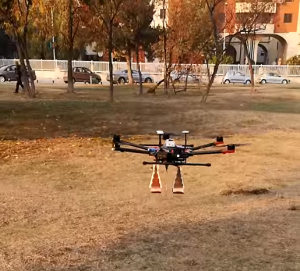
Building a ground penetrating radar for drones with Red Pitaya
Red Pitaya was used by a research group from the University of Maribor to control a low-cost ground penetrating radar attached to a hexacopter with the purpose of detecting landmines. The project, which was in development for three years, uses Red Pitaya for onboard signal processing, radar manipulation and transmitting data to the host computer via the TCP/IP protocol.
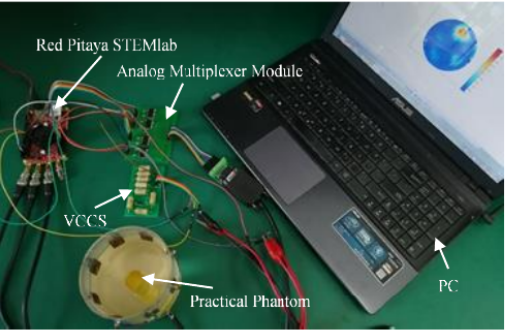
Portable Electrical Impedance Tomography (EIT)
A portable Electrical Impedance Tomography (EIT) system has been developed with Red Pitaya STEMlab for biomedical applications. The Red Pitaya STEMlab is a portable device to realize voltage generation and data acquisition for the EIT system. The EIT system includes a modified howland circuit as a voltage controlled current source (VCCS), a high speed analogy multiplexer module, 8-electrode array and a personal computer.
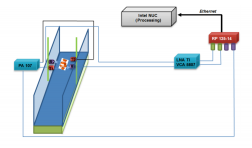
Red Pitaya for fish counting
Red pitaya plays a big part in an IoT active acoustic system for fish monitoring with direct application in biodiversity preservation near hydropower plants and dams. The system employs a cost effective single board computer as central processing unit. The acoustic signal processing is performed at two levels: the first at the board level (embedded), to decide upon transmission of data to a server, and the server level to show the results of detection and the number of fish passages (acoustic signature analysis).
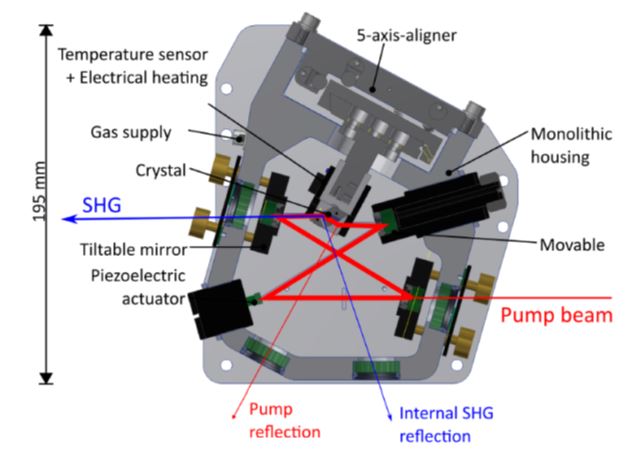
A highly stable monolithic enhancement cavity for second harmonic generation in the ultraviolet range
An experimental setup uses a bow-tie power enhancement cavity for critical SHG with a Brewster-cut BBO nonlinear crystal, delivering up to 2,500 times more SHG output power than is possible in single pass configuration. The cavity geometry is suitable for all UV wavelengths, reachable with BBO.
Explore Red Pitaya products for Research
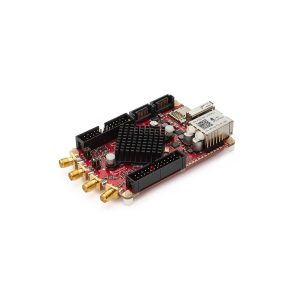
STEMlab 125-14
STEMlab 125-14 is our most versatile product and offers additional performance for more advanced users in mind.
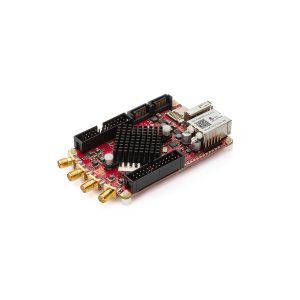
SDRlab 122-16
SDRlab 122-16 was developed specifically for software-defined radio and more demanding RF applications.
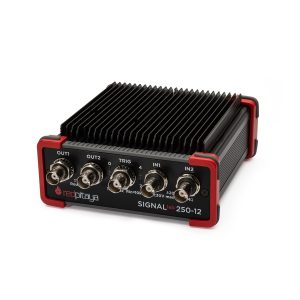
SIGNALlab 250-12
SIGNALlab 250-12 is most sophisticated Red Pitaya product, built for more demanding industrial applications and research.
Red Pitaya boards for Research institutes
See the main differences between STEMlab 125-14, SDRlab 122-16 and SIGNALlab 250-12.
Our customers' testimonials
We are very happy with the STEMlab 125-14's flexibility and ease of use. At the Technical University of Denmark these boards have been instrumental in our DASQ-1 quantum computer project, where we use them for stabilizing optical paths and photon arrival time tagging.”
Red Pitaya gave me a new research perspective: to bring acquisition and control logic right where physics happens!
Read more about Andreas' research here.
Fantastic little board that puts capabilities which were previously the reserve of well-funded labs into the hands of hobbyists, makers, classrooms and professional engineers with modest budgets.
Red Pitaya's STEMlab 125-14 is a critical component in our open hardware Scanning Probe Microscopy controller - Gwyscope. The board is a good cost effective starting point for people who would like to start with FPGA programming.
Red Pitaya is an amazing tool. Not only do I use it weekly as an instrument (mostly as an oscilloscope), but it is also a very powerful and versatile development board. Using Visual Programming and the Sensor Extension Module, I can quickly and easily turn my ideas into fully working projects!
I have been investigating the Red Pitaya board for the past few months and we've been very impressed with its accessibility and usefulness for research.
Become a part of our Research segment and receive all relevant updates
Subscribe to our updates. We will only send you industry specific information, and we promise not to spam you.